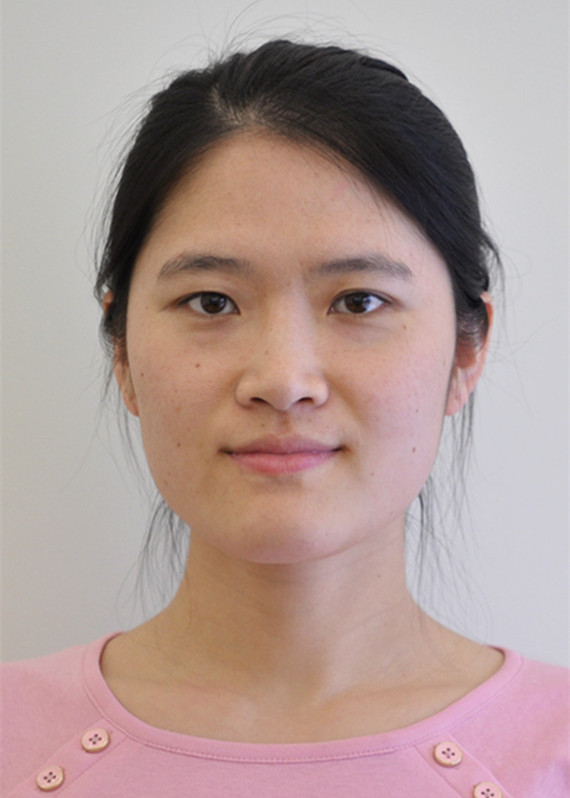
植物与微生物互作
辛秀芳
个人简介
2004.9-2008.6 本科 中国农业大学 生物学院
2008.8-2014.4 博士 美国密歇根州立大学 DOE-Plant Research Laboratory
2014.4-2017.8 博士后 美国密歇根州立大学DOE-Plant Research Laboratory
2017.8-至今 研究员 中科院上海植物生理与生态研究所/ CAS-JIC Centre of Excellence in Plant and Microbial Science
研究工作
植物在生长过程中与环境微生物有密切的互作,其中包括病原微生物、有益微生物和其它微生物。病原微生物导致的病害严重影响植物的正常生长和重要作物的产量。植物病理学的一个经典定律-病害三角学说阐明了病原物致病不仅需要感病的宿主和有致病力的病原物,而且需要适宜的环境条件(如自然界中绝大多数植物病害的发生需要适宜的温度和湿度等)。本课题组以拟南芥和水稻等为研究对象,运用分子生物学、植物遗传学、生物化学、细胞生物学、生物信息学等多种手段,在植物-微生物-环境三者的互作机制开展研究工作。主要研究方向如下所述:
1. 病原菌的致病机制
病原细菌可通过细菌毒素和III型效应子蛋白 (一类病原细菌向植物细胞内分泌的毒性蛋白)等致病武器使植物感病。目前以拟南芥-丁香假单胞杆菌 (Pseudomonas syringae; 一种革兰氏阴性病原细菌) 为模式系统,揭示病原菌使植物致病的分子机制以及参与致病过程的重要植物基因和通路。
2. 环境因素影响病原菌致病的分子机制
除了具致病力的病原菌和可感病的宿主,病原菌使植物致病还需要合适的环境条件(如合适的温度、湿度等),但是目前人们对环境因素影响植物致病的分子机制还知之甚少。我们将以拟南芥和水稻为对象,研究环境因素影响植物致病的分子基础,为通过调控植物对环境因素的响应而提高植物的抗病性提供新的思路。
3. 植物与微生物群互作
植物与微生物群互作是植物学研究的一个新兴领域,已有的研究表明微生物群对植物的生长发育和响应环境胁迫等有着重要的调节作用。正常条件下植物体内的微生物群达到一定的平衡状态,这一失衡的打破可能会影响植物的健康生长。我们将以拟南芥、水稻等为研究对象,解析植物与叶际微生物群 (phyllosphere microbiome) 互作的重要机制以及微生物群对植物的生长、抗逆等的调控作用。
主要成果
1. Yao L, Jiang Z, Wang Y, Wan S, Xin XF (2023) High air humidity dampens salicylic acid pathway and NPR1 function to promote plant disease. EMBO Journal, 42: e113499.
2. Wu J, Mei X, Zhang J, Ye L, Hu Y, Chen T, Wang Y, Liu M, Zhang Y, Xin XF (2023) CURLYLEAF modulates apoplast liquid water status in Arabidopsis leaves. Plant Physiology, 193(1):792-808.
3. Jiang Z, Yao L, Ding Y, Zhu X, Hao G, Ding Y, Zhao H, Wang S, Wen CK, Xu X, Xin XF (2024). Ethylene signaling modulates air humidity responses in plants. Plant Journal, 117(3):653-668.
4. Yuan M, Cai B, Xin XF (2023). Plant immune receptor pathways as a united front against pathogens. PLOS Pathogens, 19(2):e1011106.
5. Hu Y, Xin XF (2023). A sweet story from Phytophthora-soybean interaction. Trends in Microbiology, 31(11):1093-1095.
6. Hong X, Qi F, Wang R, Jia Z, Lin F, Yuan M, Xin XF, Liang Y (2023). Ascorbate peroxidase 1 allows monitoring of cytosolic accumulation of effector-triggered reactive oxygen species using a luminol-based assay. Plant Physiology, 191(2):1416-1434.
7. Hu Y, Ding Y, Cai B, Qin X, Wu J, Yuan M, Wan S, Zhao Y, Xin XF (2022) Bacterial effectors manipulate plant abscisic acid signaling for creation of an aqueous apoplast. Cell Host Microbe 30(4); 518-529.
8. Wan S, Xin XF (2022) Regulation and integration of plant jasmonate signaling: a comparative view of monocot and dicot. J. Genet. Genomics. 49(8):704-714.
9. Xin XF*, Zhou JM* (2022) Impaired condensate formation is to blame for failed disease resistance in plants. Life Metabolism, loac020. (*, co-corresponding author)
10. Yuan M, Jiang Z, Bi G, Nomura K, Liu M, Wang Y, Cai B, Zhou JM, He SY, Xin XF (2021) Pattern-recognition receptors are required for NLR-mediated plant immunity. Nature 592(7852):105-109.
-Commented by Nature Plants, Current Biology and Trends in Plant Science;
11. Yuan M, Ngou BPM, Ding P*, Xin XF* (2021) PTI-ETI crosstalk: an integrative view of plant immunity. Curr. Opin. Plant Biol. 62:102030. (*, co-corresponding author)
12. Gong T, Xin XF (2020) Phyllosphere microbiota: Community dynamics and its interaction with plant hosts. J. Integr. Plant Biol. 63(2):297-304.
13. Chen T, Nomura K, Wang X, Sohrabi R, Xu J, Yao L, Paasch BC, Ma L, Kremer J, Cheng Y, Zhang L, Wang N, Wang E, Xin XF*, He SY* (2020) A plant genetic network for preventing dysbiosis in the phyllosphere. Nature 580(7805):653-657. (*, Co-corresponding author)
14. Xin XF*, Kvitko B, He SY* (2018) Pseudomonas syringae: What it takes to be a pathogen. Nat. Rev. Microbiol. 16(5):316-328. (*, co-corresponding author)
15. Xin XF, Nomura K, Aung K, Velásquez AC, Yao J, Boutrot F, Chang JH, Zipfel C, He SY (2016) Bacteria establish an aqueous living space in plants crucial for virulence. Nature 539: 524-529.
16. Xin XF, Nomura K, Ding X, Aung K, Chen X, Wang K, Uribe F, Yao J, Chen J, He SY (2015) Pseudomonas syringae effector AvrE localizes to the host plasma membrane and down-regulates the expression of the NDR/HIN1-like 13 gene required for antibacterial immunity in Arabidopsis. Plant Physiol.169:793-802.
17. Xin XF, He SY (2013) Pseudomonas syringae pv. tomato DC3000: A model pathogen for probing disease susceptibility and hormone signaling in plants. Annu. Rev. Phytopathol. 51:473-98.